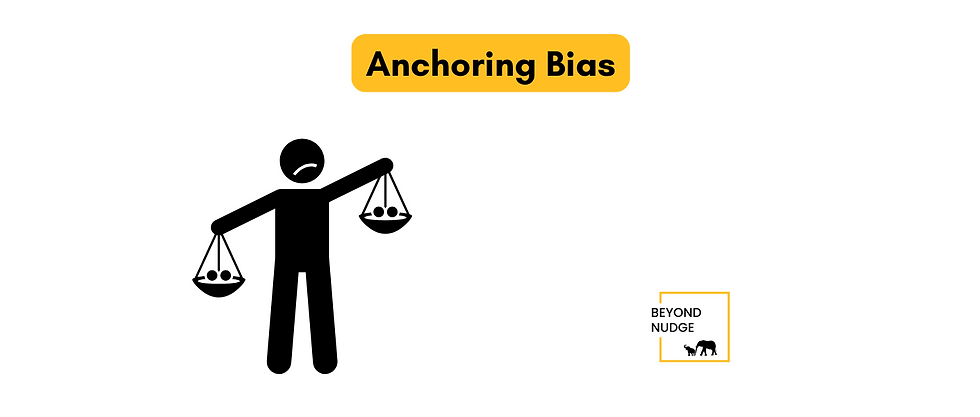Bystander effect: Everything you need to know!
- Beyond Nudge

- Dec 4, 2023
- 4 min read
An extremely disturbing incident took place on 28 May ‘23. A 16-year old girl in Delhi was brutally stabbed to death on the footpath outside her house. This atrocity was captured on a CCTV camera. The most shocking part about this was that the man who was attacking her did this in full public view and none of the many people walking by came to help the poor girl.
We’re sure you’ve heard of news stories similar to this - Where someone is getting assaulted in clear view of several people, but nobody does anything? The bystander effect, a psychological phenomenon where the presence of others inhibits individual action, is brought to the forefront by such harrowing events.
“Thou shalt not be a victim. Thou shalt not be a perpetrator. Above all, thou shalt not be a bystander.” ― Ken Wytsma,
What is the bystander effect?
The bystander effect refers to the decrease in likelihood of an individual helping someone in distress when other people are present. This phenomenon becomes more pronounced with the increase in the number of bystanders, leading to a diffusion of responsibility and collective inaction.

The bystander effect gained attention following the 1964 murder of Kitty Genovese in New York. Though initial reports of 38 passive witnesses were later questioned, the incident spurred psychologists John Darley and Bibb Latané to investigate and conduct a series of experiments. Their research revealed a startling drop in intervention rates when more people were present. When someone was the only witness to a woman in distress, 70% of people would come to her aid. However if there were other people also present only 40% people would help. This gets even more concerning in the case of cyberbullying where the results of a study revealed that in a group of 221 cyber-bystanders only 10% directly confronted the bully and tried to intervene.
"The only thing necessary for the triumph of evil is for good men to do nothing." - Edmund Burke

Why don’t people in groups help?
The bystander effect is generally attributed to three main psychological factors. These are:
Diffusion of Responsibility: When we are in a group, we have a tendency to divide up any personal responsibility by the number of bystanders present there. No-one wants to take personal onus of the task, and therefore, free-rider effect kicks in making people slack off! In the case of bystander effect, (i) The moral obligation to help gets divided (ii) The blame for not helping is also shared, reducing the guilt that a single person feels (iii) Everyone believes that someone else will help - endless passing the parcel!

Evaluation Apprehension: The fear of being judged often deters us from helping people in public. This is amplified during emergencies, where we might feel inadequately trained to handle the scenario and fearing that our actions can be unhelpful or even detrimental. While logically, any help is better than none, the dread of being judged or not meeting expectations often outweighs immediate action in these situations.
Pluralistic Ignorance/Herd behaviour: We tend to rely on and copy other people’s behaviours, especially when we are in an ambiguous situations. In scenarios like the ones we’ve discussed, where immediate action is required, if we see everyone else being passive, we tend to mimic that behaviour.
While these situational psychological processes are the ones that have been most extensively researched there are also other understudied non-situational factors that may explain bystander apathy. A study from 2018 provides a more in-depth understanding into bystander apathy by exploring several factors such as neural, motivational and dispositional aspects in addition to these three traditional explanations. Their study suggests that personality of individuals has a key role to play and we reflexively behave apathetically. Few other factors also seem to come into play:
Group Composition: if the bystanders know each other, it tends to reduce the collective apathy.
Perceived Competence: if we believe that we are competent, we are more likely to help. For example, a doctor in a medical emergency is more likely to act.
Gender of the Victim: Studies have shown that people are more likely to help out women compared to if it were a man who needed help.
How to be an 'Upstander'?
Each of us will certainly come across situations where our help is important and urgently required. It is very important that we learn to be an upstander by learning how to behave in such scenarios.
The American Psychology Association has created an Intervention Tip Sheet. They suggest memorising the “Five D’s” of intervening as a bystander:
Distract: Create a diversion or engage with the aggressor to disrupt the ongoing harassment.
Delegate: Ask for help. Call for emergency support if necessary and specifically request aid from individuals in the vicinity.
Document: If safe and appropriate, and if the victim is already receiving help, record the incident through photos or videos.
Delay: Interact with the victim post-incident to offer support.
Direct: If the victim, you and everyone else is safe, confront the offender directly.

Wrapping up!
The bystander effect is a concerning social phenomenon, underscored by incidents like the tragic event in Delhi. To prevent such occurrences, it's crucial to raise awareness about this group behaviour. As we explored in this blog, there are various psychological and situational challenges that needs to be overcome. Overcoming bystander apathy requires awareness, personal accountability, and proactive action. By being aware of these factors, assuming personal responsibility and taking decisive action, we can work towards a society where all of us are able to break out of bystander apathy.
“Don’t be a witness. Be an activist.” - DaShanne Stokes




Comments